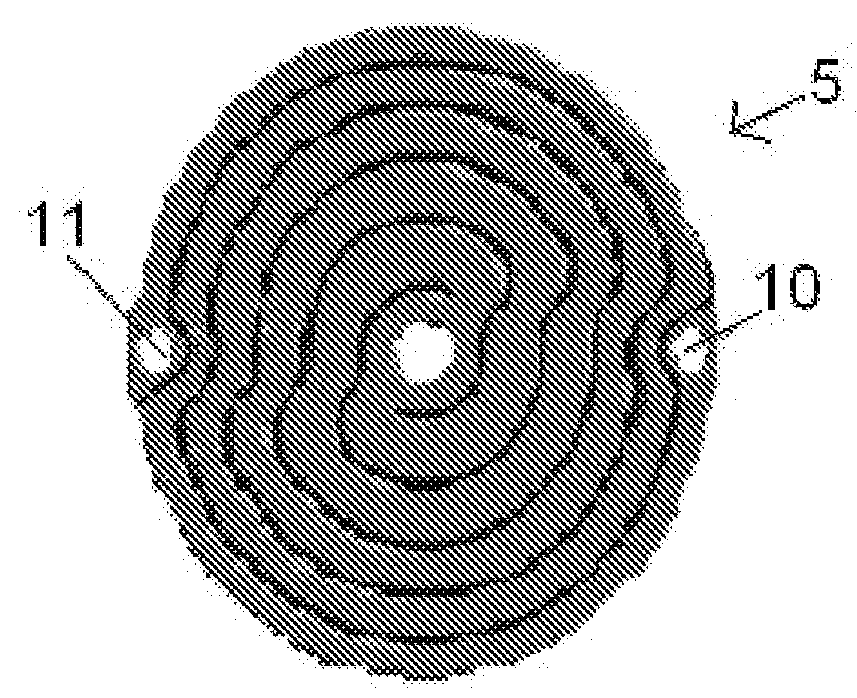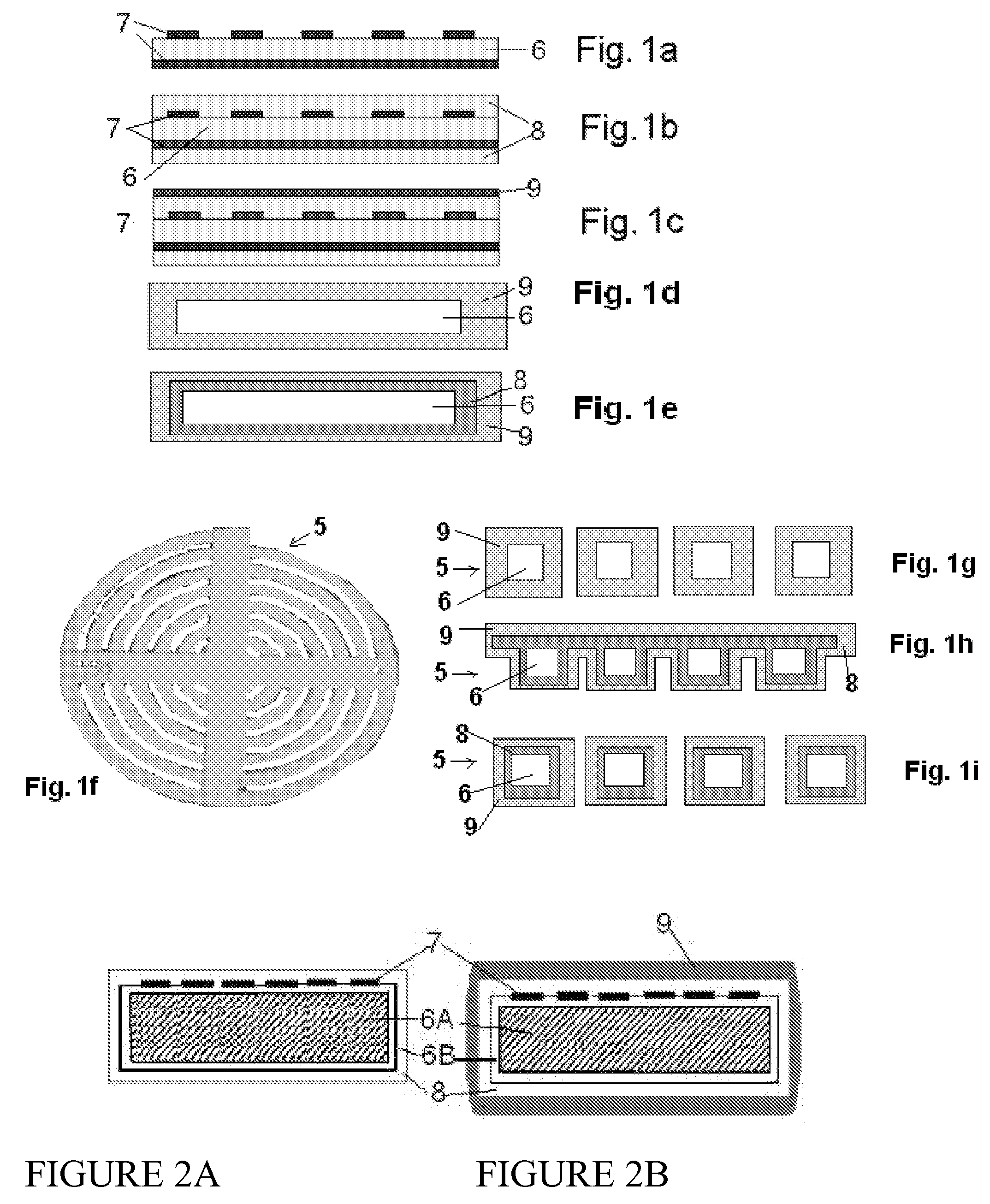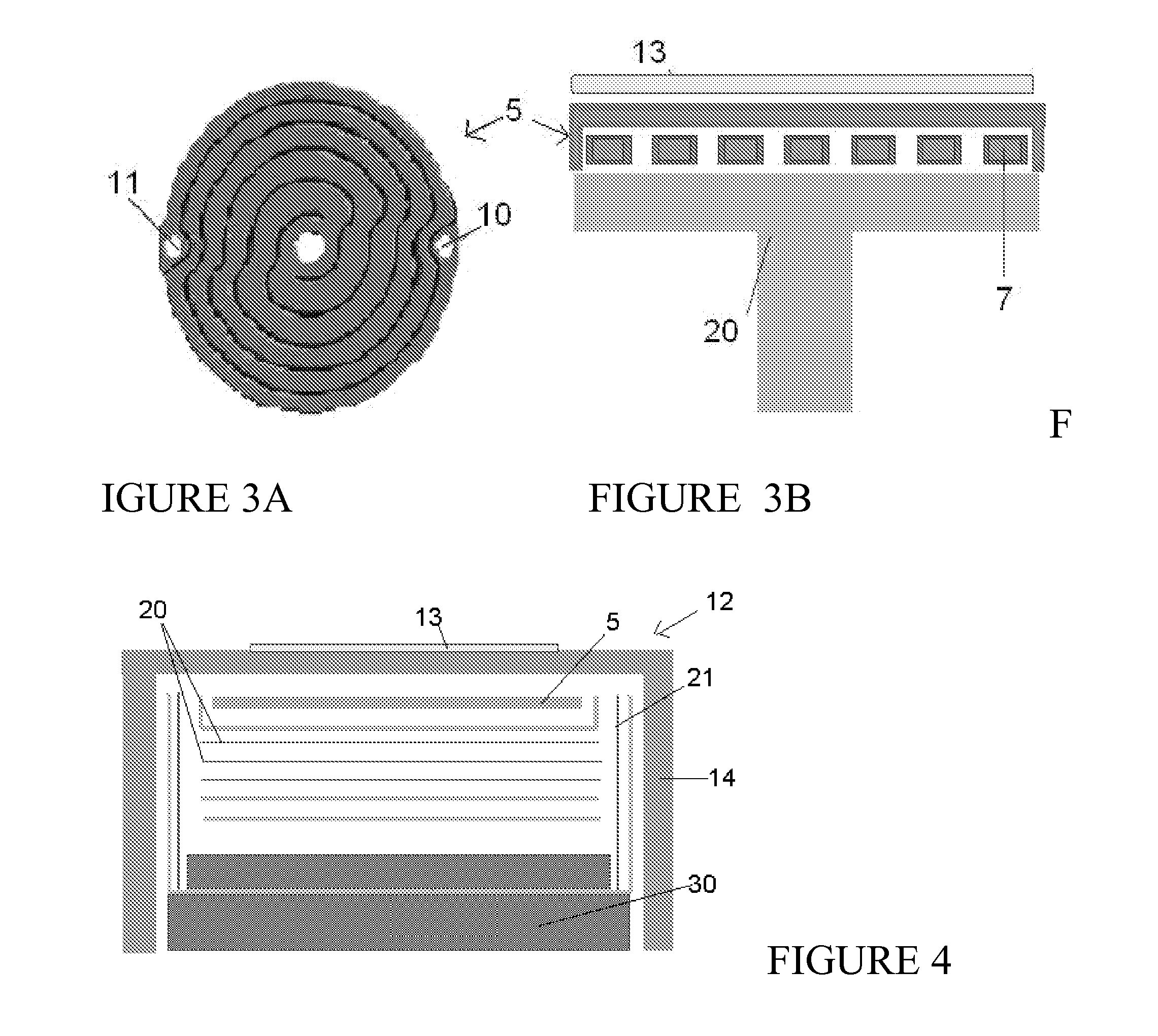Etch resistant heater and assembly thereof
a heater and etch-resistant technology, applied in the direction of coatings, metallic material coating processes, chemical vapor deposition coatings, etc., can solve the problems of increasing the lifetime of the heater, not always practicable in some applications to establish physical contact between the surface, and inability to transfer heat from the heating element to the wafer, so as to improve the thermal uniformity of the wafer, improve the temperature uniformity, and save the effect of heat generation
- Summary
- Abstract
- Description
- Claims
- Application Information
AI Technical Summary
Benefits of technology
Problems solved by technology
Method used
Image
Examples
examples 1 and 2
[0064]Computational fluid dynamics (CFD) calculations are carried out to model the thermal modules (heater assemblies). The first thermal module 12 employs a ceramic heater in the prior art as illustrated in FIG. 4. The same thermal module 12 employs one embodiment of the heater of the invention as illustrated in FIG. 5. The modules are to heat a single 2″ inch wafer to 1300° C. with a uniformity of around ±3° C. Uniformity requirement is extremely stringent in the case of Metal Organic Chemical Vapor Deposition (MOCVD) process. Hence, every Celsius degree variation in temperature uniformity affects the deposition process. Temperature uniformity on the wafer surface is defined as the difference between the maximum temperature and minimum temperature as measured by 9 thermocouples placed across the wafer surface.
[0065]As shown in the Figures, wafer 13 is placed on a susceptor 14 which is rotating and hence cannot be in direct contact with the heater 5. The base plate 30 comprises gra...
example 3
[0073]In this example, a radiant ceramic heater of the prior art is experimentally tested in an enclosed thermal module 90 as illustrated in FIGS. 9A-9B. In 9A, the ceramic heater 5 has a pBN core plate with a diameter of about 40 mm and a thickness of 2 mm, a thin patterned electrode of pyrolytic graphite, and an overcoating layer comprising pBN of a thickness of 0.15 mm. The enclosed thermal module 90 has an ambient pressure of 30 pa (close to vacuum condition). The heater 5 is surrounded by concentric cylinder tubes (90 mm in diameter) comprising pBN 93, Mo 94, and graphite 95, which function as radiation shields. In FIG. 9B, a stack of reflector plates 97 comprising pBN and Mo are placed below the heater to help conserve the heat by reflecting by towards the graphite susceptor 91, which is positioned 3-5 mm above the heater top surface. The susceptor having a diameter of 55 mm is heated only by thermal radiation.
[0074]A wafer is placed on the susceptor 91, which rotates and cann...
example 4
[0075]This is a duplicate of Example 3, except that a heater of the present invention is used. In this example, a 40 mm diameter ceramic heater with a pBN core plate with a diameter of about 40 mm and a thickness of 2 mm, a thin patterned electrode of pyrolytic graphite, and an overcoating layer comprising PBN of a thickness of 0.15 mm. Over this coating, the heater is further provided with a top overcoating layer of pyrolytic graphite of about 40 μm thick.
[0076]Table 2 presents data obtained from the operation of the thermal modules of Examples 3 and 4 in heating the susceptor when the heater is steadily maintained at 1700° C. Data is also illustrated in FIG. 10A-10B comparing the ramping tests of the two heaters.
TABLE 2ExampleHeater TypeSusceptor T ° C.Heater T° C.3PBN Heater110017004PG Overcoated PBN Heater13801700
[0077]As illustrated in Table 2, when both heaters are set to the same T of 1700° C., the susceptor T for the heater of the invention (Example 4—PG overcoated PBN heate...
PUM
| Property | Measurement | Unit |
|---|---|---|
| temperature | aaaaa | aaaaa |
| thickness | aaaaa | aaaaa |
| thickness | aaaaa | aaaaa |
Abstract
Description
Claims
Application Information
 Login to View More
Login to View More - R&D
- Intellectual Property
- Life Sciences
- Materials
- Tech Scout
- Unparalleled Data Quality
- Higher Quality Content
- 60% Fewer Hallucinations
Browse by: Latest US Patents, China's latest patents, Technical Efficacy Thesaurus, Application Domain, Technology Topic, Popular Technical Reports.
© 2025 PatSnap. All rights reserved.Legal|Privacy policy|Modern Slavery Act Transparency Statement|Sitemap|About US| Contact US: help@patsnap.com



